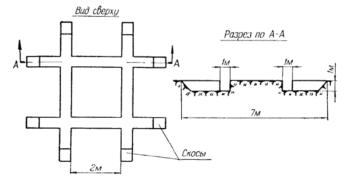Pilunov, Stefan Ivanovich
Stefan Ivanovich Pilunov, a Soviet citizen from the village of Prisna near the Belorussia city Mogilev, was arrested in July 1943 for partisan activity, and held in a prison until 4 October of that year. On that day, he claims to have been deployed by his German captors in the exhumation of various regional mass graves and the cremation of the victims they contained.
On 20 May 1944, he signed a very long statement typed up at the office of the chief of staff of the Belorussian partisan movement. In it, he claimed to have been involved in exhuming and burning some 48,000 bodies from 4 October to some unspecified day in November 1943 in the vicinity of Mogilev. However, German wartime documents speak of a total of “only” 6,434 execution victims in this area, and the maximum orthodox claim sits at around 10,000.

His detailed description of the alleged cremation pyres is completely nonsensical and technically impossible: They consisted of a set of two parallel ditches, 7 to 8 meters long and 2 m apart, intersected by a second such set running perpendicular to it. (See his own illustration.) The ditches served to feed air into the pyres built on top of these ditches.
Pilunov asserted that 20 alternating layers of firewood and bodies were piled up to a height of 8 to 10 meters. Since the base of each pyre was only maybe 2 meters wide, the stack would inevitably have collapsed well before the height of 8 meters was ever reached, and it certainly would have collapsed when set ablaze.
At a height of 10 meters, one layer of firewood and bodies would have been only half a meter thick. A little less than one cubic meter of firewood would have allowed only for the cremation of about three corpses per running meter in each layer. With these figures, the claimed number of cremations in the time frame alleged would not have been possible under the circumstances claimed by Pilunov.
Pilunov claimed that only 35 inmates were assigned to chopping firewood, while some 170 inmates were continually sent to Mogilev and nearby villages to procure boards, sticks, coal, pitch and other fuels. There were not enough German guards to keep all these inmates – running all over the region – under control. None of them ever tried escaping. This story cannot be true, all the more so, since these inmates were “bearers of the secret,” and the Germans would not have risked their escape.
An average prisoner is rated at being able to cut some 0.63 metric tons of fresh wood per workday. Hence, within the 16 days allotted for clearing out the first set of mass graves containing some 25,000 to 35,000 bodies, the 35 wood choppers could have chopped some 310 tons of green wood. With 250 kg of green wood needed to cremate one body during open-air incinerations, this wood was good for cremating some 1,400 bodies, hence only some 5% of what was allegedly burned. Cremating 30,000 bodies would have required some 7,500 metric tons of wood. This would have required the felling of all trees growing in a 50-year-old spruce forest covering some 17 hectares of land, or some 37 American football fields. To cut this amount of wood within 16 days that this operation supposedly lasted would have required a work force of some 744 dedicated lumberjacks just to cut the wood. Hence, the 35 inmates would not have taken 16 days to get the wood needed, but rather 340 days or almost a year.
This testimony relates to one of many events claimed to have been part of the alleged German clean-up operation which the orthodoxy calls Aktion 1005. It shows that, if a lying witness is given incentives and the liberty to ramble on, they will inevitably expose themselves by absurd stories and preposterous claims. Pilunov’s statement is a typical expression of fantastic Soviet propaganda.
In another part of his testimony, Pilunov also claimed to have spent a night sleeping with other inmates in a “gas van” – rather unlikely – which he described as a 4-m wide vehicle. However, since the maximum permissible width of road vehicles in Germany is 2.55 m, no road vehicle 4 m wide would ever have been manufactured. His description of two gas distribution boxes on either side of the vehicle, fed from the outside with engine-exhaust gas through two rubber hoses, is in stark contrast to what the orthodoxy claims these vans looked like. (One metal hose fed gas through a simple hole in the floor’s center; see the entry on gas vans). Moreover, a rubber hose would not have withstood the heat of the exhaust gasses. In other words, Pilunov invented or imagined things.
Pilunov claimed that he was shot at the end of his activities, but was only wounded and unconscious. He awoke while lying on a burning pyre (!), from which he claimed to have succeeded fleeing without getting burned or being noticed by anyone.
When Pilunov was interrogated by German court officials in 1975, he had his story adjusted to resemble the orthodox narrative by building his pyres on rails over ditches rather than simple logs put across a crazy set of zigzagging ditches. He also reduced the pyres’ height to four meters, which is still twice as high as would have been manageable.
(For more details, see Mattogno 2022c, pp. 357f., 616-629.)

You need to be a registered user, logged into your account, and your comment must comply with our Acceptable Use Policy, for your comment to get published. (Click here to log in or register.)